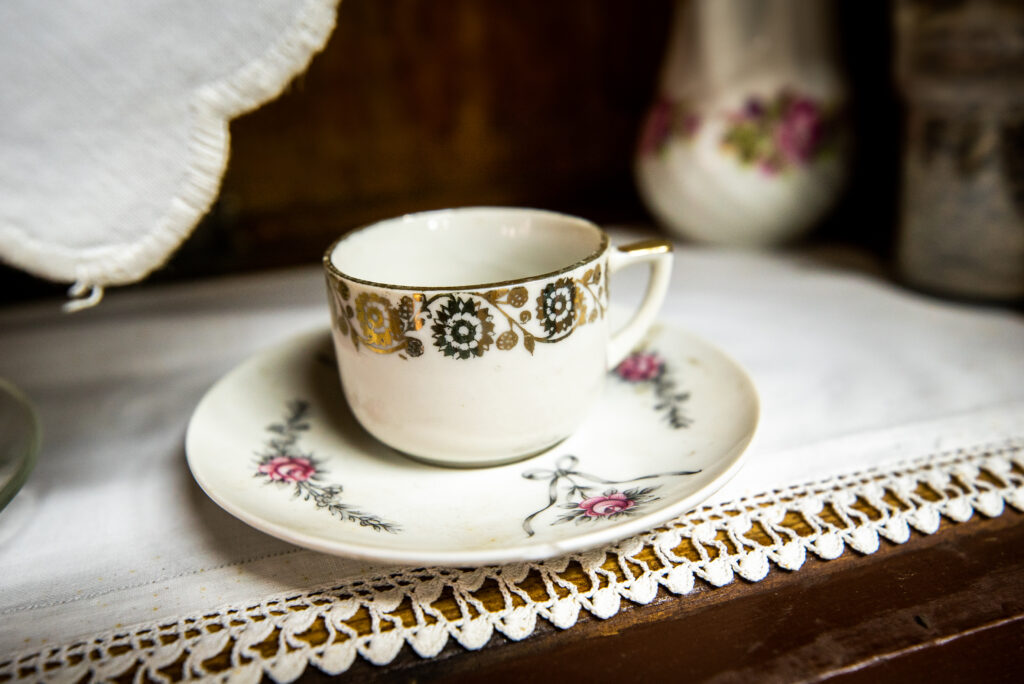
A single burner gas stove, tea cups, and ornate saucers crossed the Aegean Sea, reached Nea Ionia of Volos, and were later donated by their owners to the ‘Englezonisi’ Cultural Association of Asia Minor Greeks of Nea Ionia, Magnisia, so that they could take their place in the community’s shared past and assist in their own way in the effort towards the preservation of its memory and history.
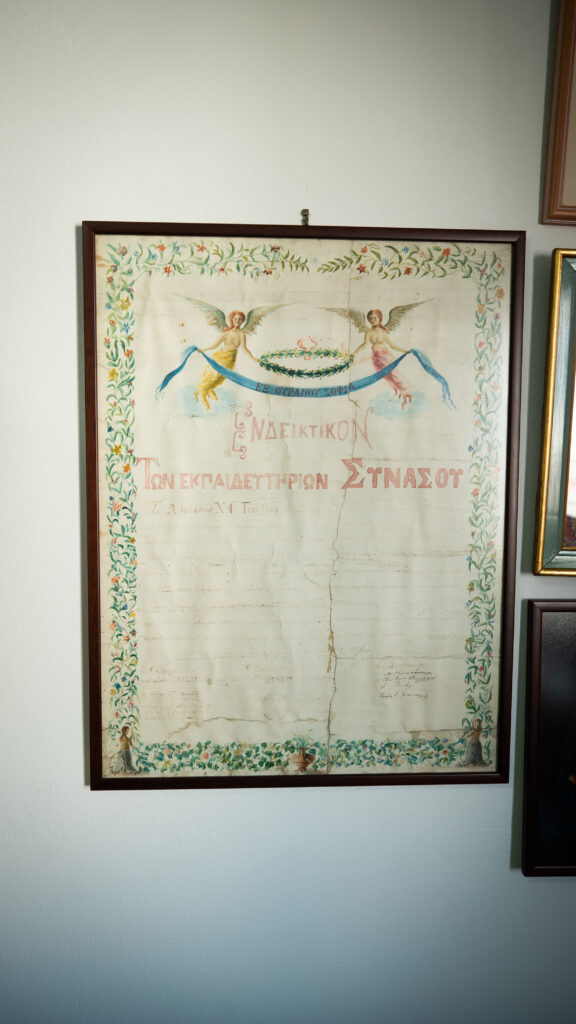
The handwritten graduation certificate for Athanasios Ch. G. Toperidis from 1898, which is exhibited in the ‘Nea Sinasos’ Association Museum, is only one of the hundreds such certificates issued for Sinasos men and women over the course of the almost 100 years that the schools of Sinasos remained in operation.
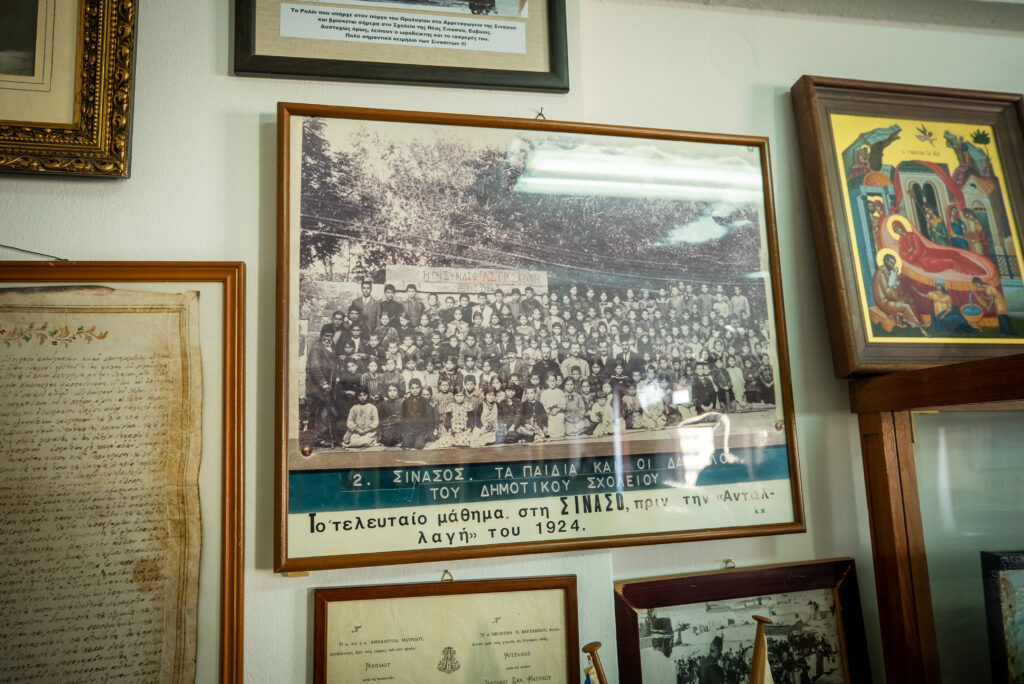
On the last day of school, the students took a commemorative photograph which they brought with them to Greece along with their textbooks. A copy of this photograph can be found at the ‘Nea Sinasos’ Association Museum.
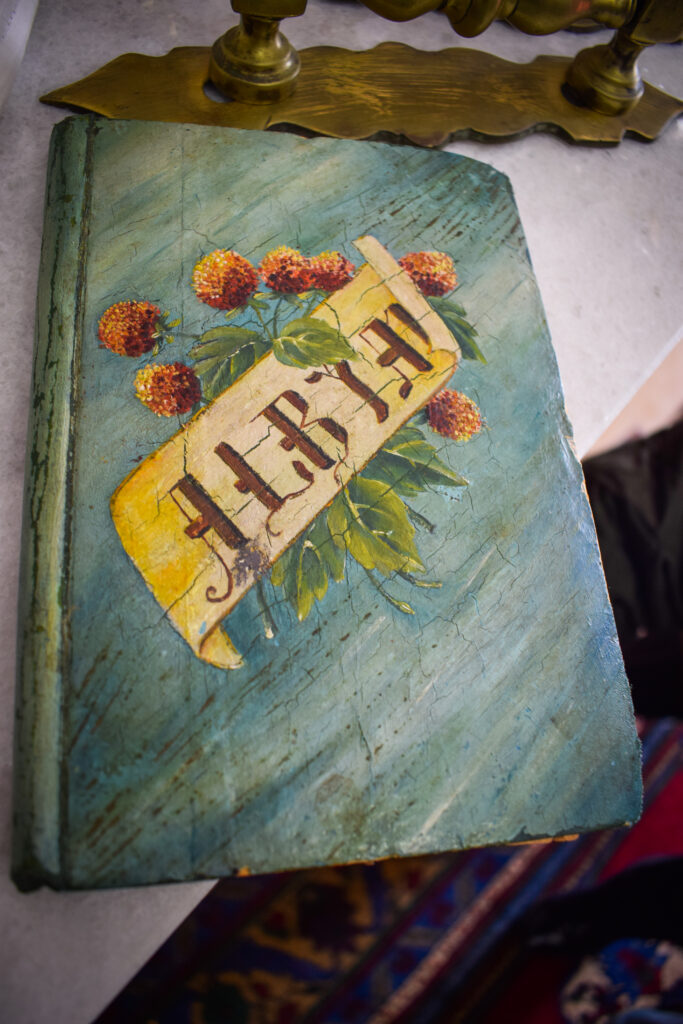
Young Evangelia Meimaroglou’s scrapbook was donated to the Brotherhood by Mairi Meimaroglou-Markogiannaki. Leafing through its pages, we can catch a glimpse of what a personalized scrapbook from the beginning of the 20th century looked like.

A crimson wedding dress from 19th century Cappadocia was donated by Alexandra Melita to the ‘Agios Polykarpos’ Brotherhood of Asia Minor Refugees in Chania. It is accompanied by a photograph of the couple.
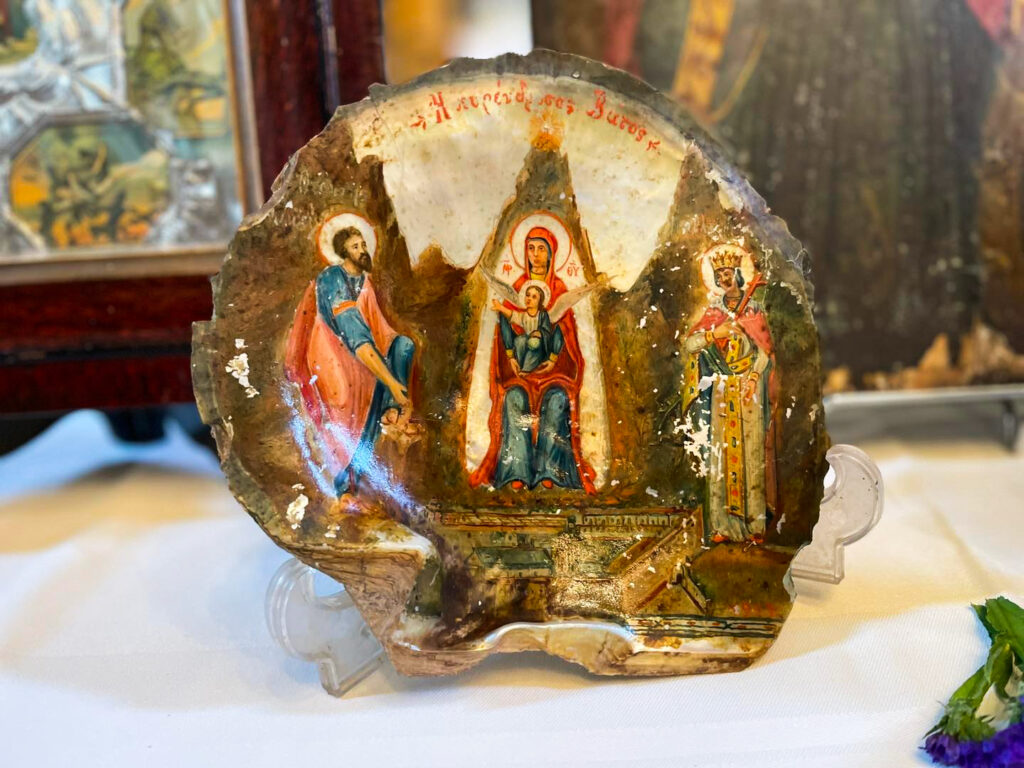
On her father’s side, Gogo Rakopoulou hails from Prousa, while on her mother’s side, her ancestors were originally from Smyrna. Their original surname is not known, since they adopted the surname ‘Tsichlakis’ upon their arrival in Chania. These four icons travelled with them and, after the family had settled in Greece, they adorned their homes and, later, their descendants’ homes.
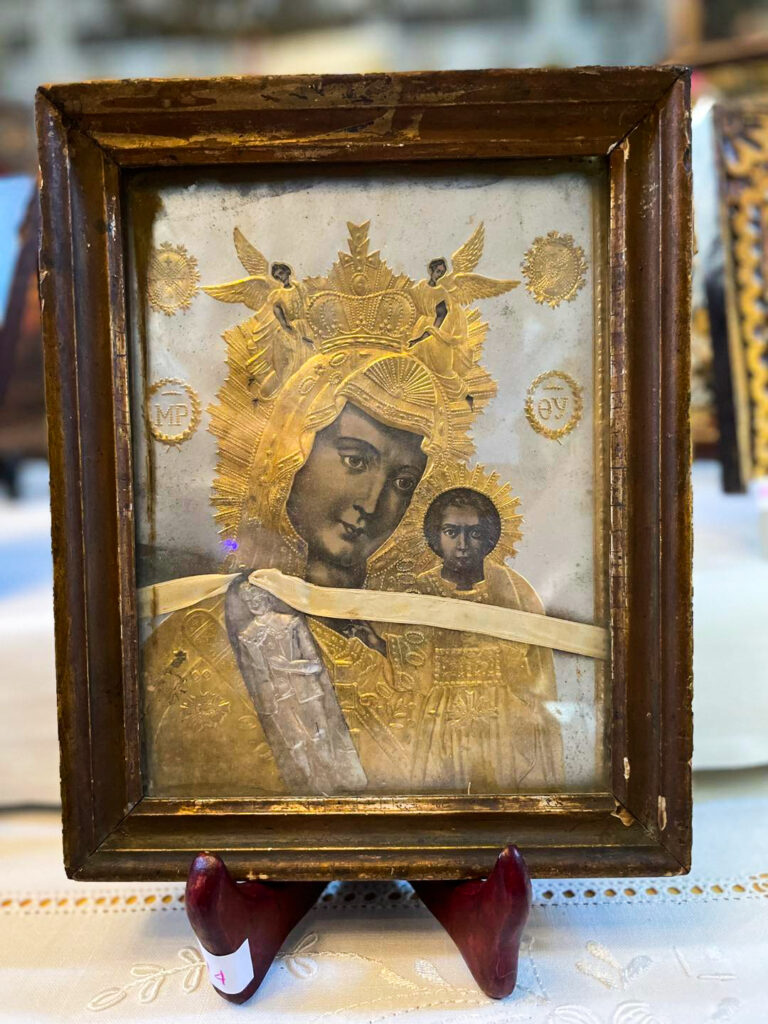
Gogo Rakopoulou describes how, when she took the icons out to clean them, she noticed that some of them had writing on them. As she says, one of the icons was probably her family’s diary.
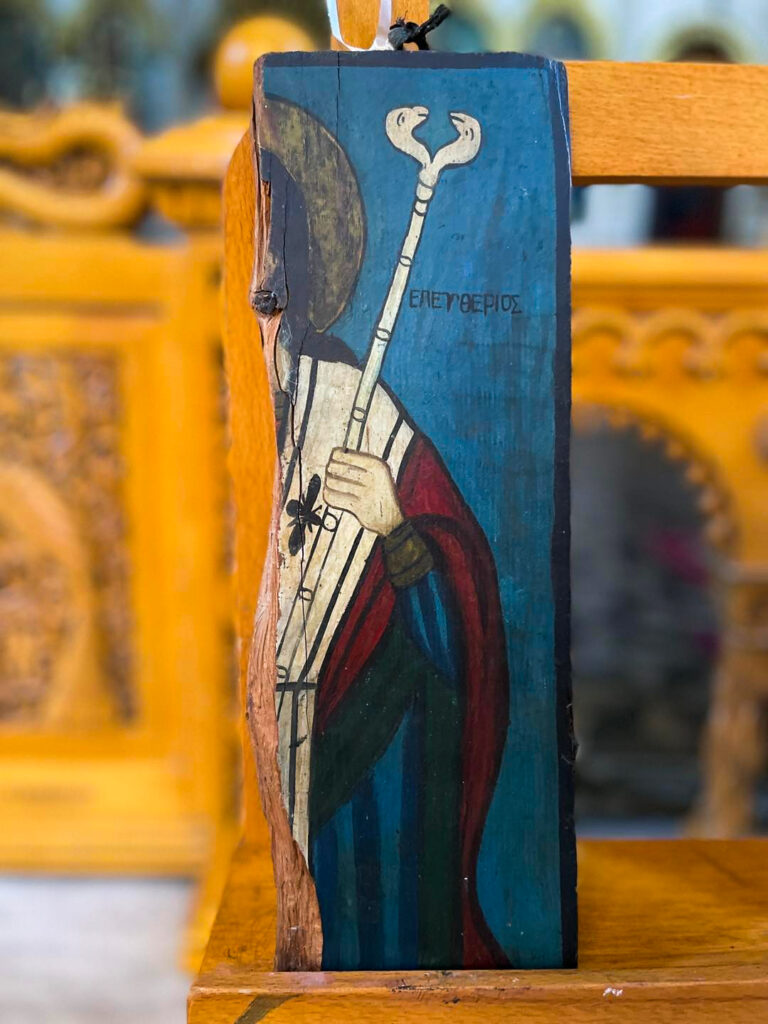
Half of an icon of Agios Eleftherios survives in Chania. We can see half the body of a saint dressed in blue, green, red and white holding a sceptre. The face of the saint is missing, but the name ‘Eleftherios’ remains. The wood on which the figure of the saint has been painted has been torn in half.
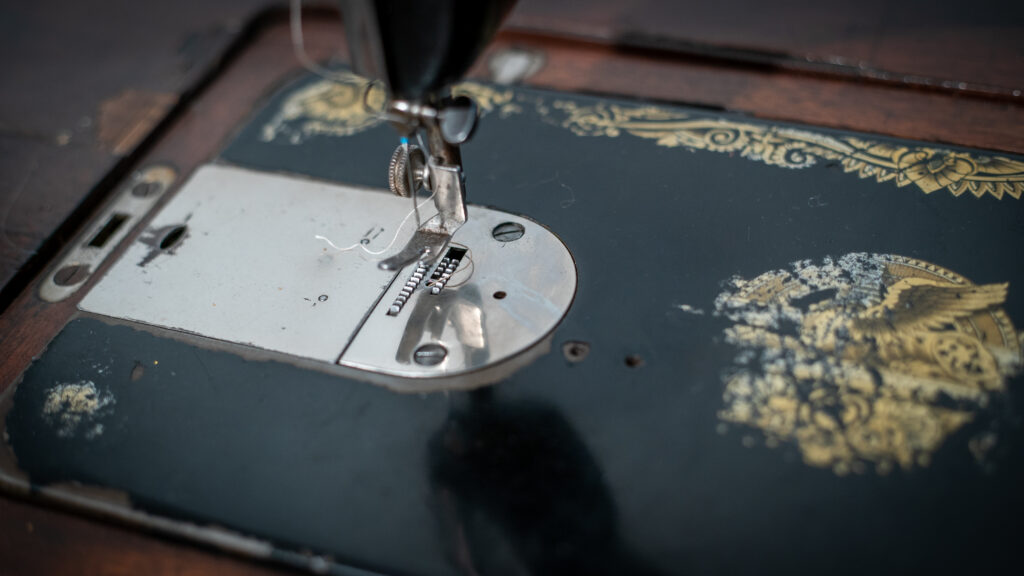
This sewing machine, which is still functional, encapsulates the entire story of the Michailidou family’s movement from Pontus to Russia and then to Greece. Anastasia Michailidou chose to carry this heavy and cumbersome object on this long journey, highlighting the practicalities and material choices that migrants have been faced with throughout history.

The family of Kyriakoula Moschou brought few items with them to Greece, mostly religious icons. Apart from carrying great value for their owners, these icons soon became symbols for the whole neighbourhood. They gave hope and instilled courage, helping the refugees cope with the hardships of their everyday life. The icons did not just stand for their faith in God, but were also symbols of the solidarity and the kindness that brought the neighbourhood’s residents together.









